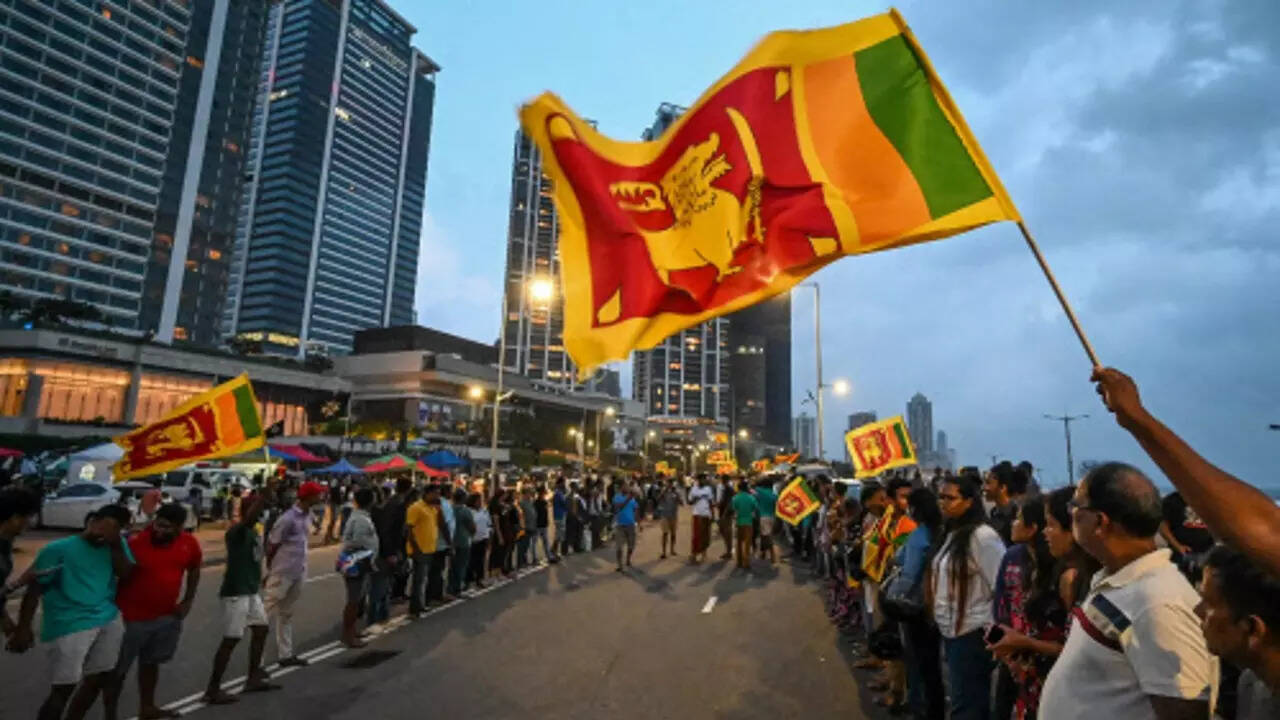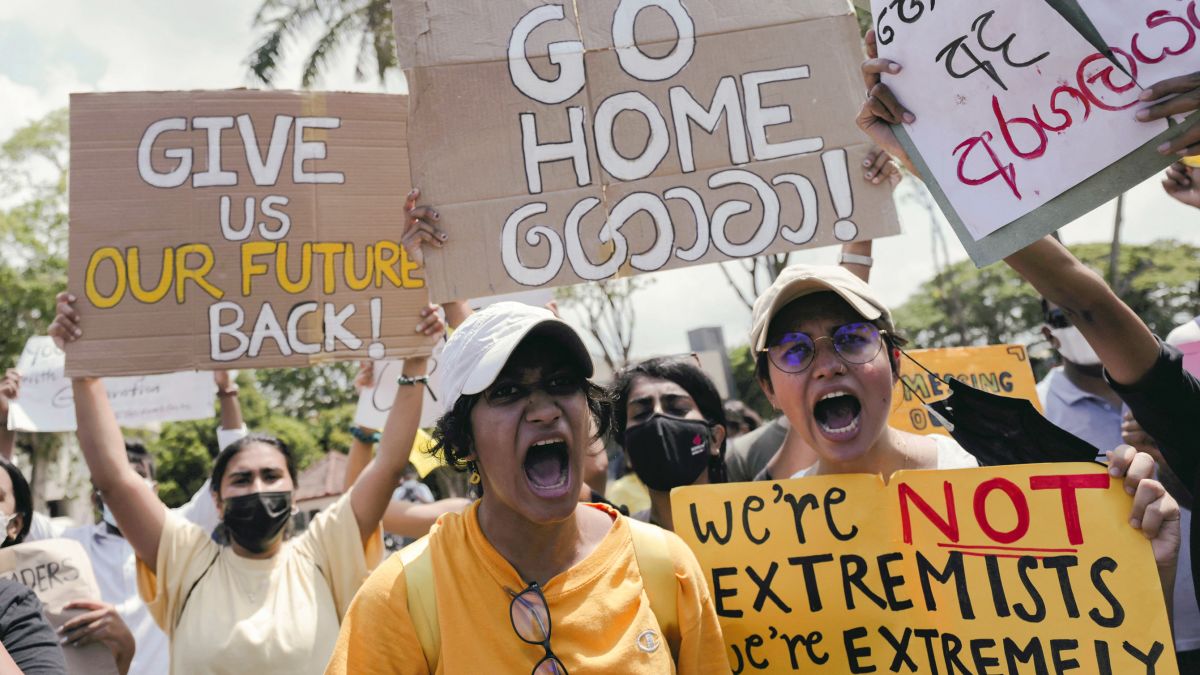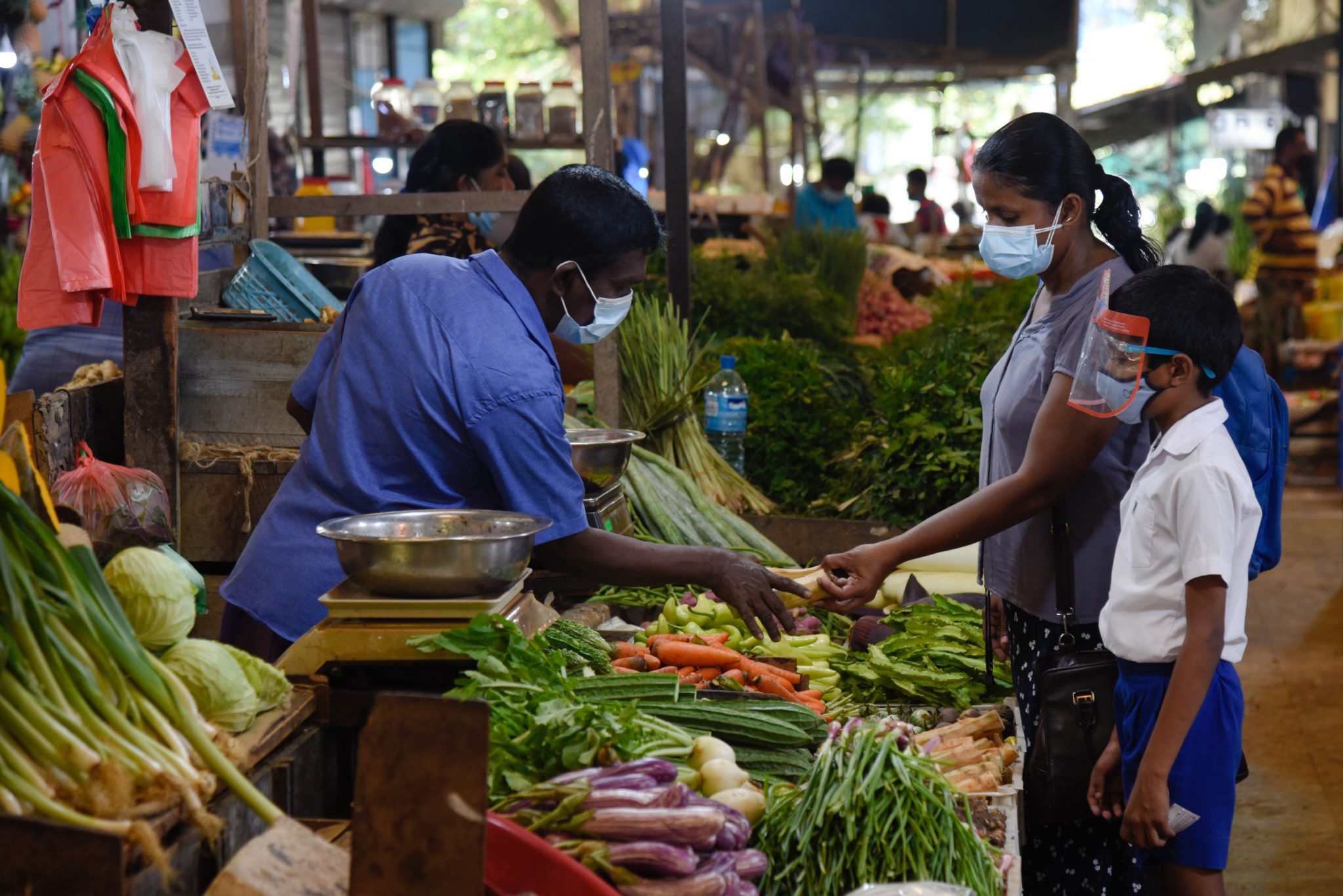A once-in-a-lifetime opportunity for Sri Lanka to make much-needed improvements is presented by one of the worst economic crises to hit the country since independence. Many countries, notably India and Thailand, underwent massive economic reforms after going through severe economic crises and came out of them significantly stronger.
The government should take advantage of the current economic crisis in Sri Lanka to implement policies that it has never before been able to, such as ending regressive subsidies and restructuring state-owned businesses.
Sri Lanka’s severe economic issues are demonstrated by the fact that the nation is frequently cited as an example of how a country’s economy shouldn’t be governed. Extreme gasoline and gas shortages; currency devaluation that nearly caused hyperinflation; a paucity of pharmaceuticals; and protracted power outages were all recent events that were primarily attributed to a lack of foreign cash.

This issue, which has been building for a while, will take Sri Lanka a long time to resolve. This situation is the result of years of budgetary deficits, current account deficits, an overburdened public sector, declining tax collection, and subsidized pricing.
The nation is currently considering an IMF rescue, but first, it must restructure its debt. Restructuring debt can be difficult, particularly in China, which favors refinancing loans over debt restructuring methods. We are setting a bad precedent by suing the Sri Lankan government as one of the foreign holders of sovereign bonds.
The only bright side to Sri Lanka’s economic catastrophe may be the long overdue, significant economic changes that will be necessary to navigate the crisis as the country teeters on the precipice.
The economic crisis worsened as a result of several initiatives implemented by the administration of former President Gotabaya Rajapaksa. Sri Lanka already had minimal tax collections, but the 2019 tax cuts increased the country’s fiscal shortfalls, which caused international rating agencies to downgrade Sri Lanka and virtually prevent it from accessing global financial markets.
The COVID-19 epidemic further worsened the situation by reducing the number of travelers and remittances sent home by Sri Lankans working overseas. According to the previous president, the restriction on chemical fertilizers was another error that drastically reduced agricultural productivity. The economic crisis became out of control as a result of fixing the exchange rate at 203 Sri Lankan rupees to one US dollar by exhausting foreign reserves and delaying interaction with the IMF.
But the structural problems with the Sri Lankan economy bear a significant portion of the responsibility. The country’s current state is the result of macro-risk factors such as a 26-year civil war, cultural prejudices against foreign direct investment, public distrust of privatization, populist policies, and low taxation.
Sri Lanka’s economic crisis has fundamental origins.
Sri Lanka had one of the greatest economies in Asia when it gained independence in 1948. But since then, things have become worse rather than better. For many years, Sri Lanka’s economy has been governed by populist macroeconomic policies. Election promises made by several political parties included subsidized rice, discounted bread, free fertilizer, and reduced taxes. As a result, there have been decades-long budget deficits, rising public debt, and money printing, which have all contributed to a low but consistent pace of inflation.
Political parties frequently make job promises to the public during election seasons, which leads to a large number of people receiving state sector employment even when no such positions are available. In Sri Lanka, the government employs a little over one in every six people who are working.
Because there are 1.4 million workers in the state sector, 86 percent of the government’s tax revenue in 2021 was used to pay their salaries. To make matters worse, the government spends an astounding 71 percent of its income on servicing Sri Lanka’s debts.
A significant fiscal imbalance is produced by only covering interest payments and state sector employee wages, which are controlled by increasing borrowing. The amount of money the government can spend on healthcare, education, and other development initiatives is likewise severely limited.
Despite having the second-highest GDP per capita in South Asia and being the first country in South Asia to liberalize its economy in the 1980s, Sri Lanka’s liberalization was incomplete, and several measures were subsequently undone.
The government has moved its emphasis toward import substitution since the middle of the 2000s. Sri Lanka protects several of its sectors with one of the highest tariff rates in the area. Due to their comfort with selling in the local market, many major businesses in protected industries now have less motivation to innovate.
But since they were less inventive and competitive, they were also unable to sell internationally. Due to import quotas, tariff barriers, and a dearth of free trade agreements (Sri Lanka only has three FTAs), the country is excluded from many international supply chains.
Before the mid-2000s, Sri Lanka had mostly borrowed from multilateral at cheap interest rates, but this began to change when Sri Lanka issued its first foreign sovereign bond in 2007 and began borrowing from China during the post-civil war period at higher interest rates. The majority of the funds were allocated to vanity projects like the Colombo Lotus Tower and non-tradable businesses.
Last but not least, Sri Lanka’s tax income to GDP ratio has considerably decreased since the mid-1990s. Nearly 20% was the percentage in 1990, which was comparable to many wealthy nations. After the tax cuts, the tax-to-GDP ratio fell to just about 8%, one of the lowest levels ever recorded. In 2019, it dropped as low as 12%. Even worse, just 1% of the population is subject to income taxes, and direct taxes only account for less than 2% of GDP.
For Sri Lanka to succeed over the long run, considerable economic adjustments are needed. A consistent monetary policy is necessary to ensure macroeconomic stability and public confidence in the local currency. A consistent monetary policy is necessary.
As demonstrated by the current economic crisis Sri Lanka is experiencing, an independent central bank is crucial. The Treasury can only seriously pursue fiscal consolidation if an independent central bank has the authority to stop money from being issued.
It may be possible for central bank committees to make long-term policy choices on interest rates and reserve requirements without influence from politics by adding more well-respected experts to them and giving them a set duration.
Tax reforms are crucial for revenue-based fiscal consolidation, another requirement for economic sustainability. The government should establish a method to effectively collect taxes and expand the tax base rather than just raise taxes.
Additionally, reform is required to control government spending. State funds are severely drained by state-owned enterprises (SOEs). As a result, the budget deficit has widened. State-owned enterprise management is ineffective because the ruling parties employ SOEs for quick political benefits, which causes them to lose focus on a long-term sustainable plan. Since the appropriate government ministries pick the chairman and board of directors of SOEs, they frequently have political party allegiances.
Reforms must be implemented by restructuring these state agencies that are operating at a loss and passing legislation requiring financial disclosures and independent audits. The Treasury provides SOEs with unrestricted funding, and they may also borrow money from other state organizations, particularly state banks. Therefore, they have no motivation to balance their budgets. Financial discipline might be achieved by requiring SOEs to balance their budgets and limiting help from the Treasury.
Many SOEs should be privatized after a comprehensive investigation is conducted to systematically evaluate the advantages and hazards involved. Privatizing SOEs makes perfect sense in highly competitive industries like supermarkets, hotels, and aeroplanes, where a state institution doesn’t have to have commercial interests. Some Sri Lankan SOEs should be reorganized and corporatized so they may be privatized in the future if necessary, as Thailand did during its economic crisis in 1997.
Additionally, reforms are required to reduce Sri Lanka’s long-standing current account deficits. The objective should be to move the nation into an export-driven economy. With an emphasis on import substitution, Sri Lanka has among the highest tariff rates in the area, protecting local industry. Sri Lanka is a small country with an $80 billion GDP.
Attempting to create a large number of goods only in Sri Lanka for the local market results in diminished economies of scale, which leads to inferior quality and/or more expensive items. Since decreasing tariff rates in the near term is not an option due to the FX issue, a plan should be put in place as soon as the economy stabilizes to convert the nation into an export-driven economy. To address the nation’s shortages, quantitative constraints should be lifted even if tariff rates are high.
The manufacturing industry in Sri Lanka must follow the current global trend and join global supply chains. Finding specialized value additions that can be implemented in the supply chains of multinational corporations is a successful method that developing nations like Vietnam have used to improve their exports.

Sri Lanka requires trade liberalization, export-focused FDI, more FTAs, and greater trade facilitation to integrate with global supply chains. Sri Lanka only has three free trade agreements, compared to Vietnam’s 26, whose economy was opened significantly later. Sri Lanka may plan to make better use of its current FTAs, particularly the one with India, which will promote exports.
Sri Lanka may take advantage of this by leveraging its advantageous position. Sri Lanka ranks 99th in the world in the World Bank’s ease of doing business rankings, making it imperative to improve this factor. In terms of enforcing contracts, Sri Lanka was rated 164th in the world in 2020; this has to change.
The factor market needs modification. Eighty-two percent of the land in Sri Lanka is owned by the government, significantly limiting private sector land use. The leasing of government property has two drawbacks: the renter will not be allowed to use the property as collateral and may not make long-term investments in the property.
Another significant problem is land fragmentation, which makes it difficult to find large parcels of land for important development projects. An appropriate method of land appraisal is also necessary to attract investors.
For the economy to become more competitive, labor changes are required. Due to Sri Lanka’s hefty retrenchment costs, the country is very undesirable to investors. The labor force should be developed via education and training with an emphasis on building future skills such as analytical thinking and creativity for a workforce that is prepared for the future to improve labor output.
Trying to overcome the twin deficits
Spending performance (internal finance) has had a greater impact on Sri Lanka’s economic success than trade performance (external finance). According to the twin-deficit hypothesis, these nations will eventually experience unmanageable deficits in their trade and government budgets, whereas those with external finance focus often see improvements in both.
As a result, Sri Lanka’s problem with excessive spending got worse by growing its fiscal and trade deficits, which were increasingly supported by domestic and international borrowing.
In contrast to non-tradable sector development, which was predominantly supported by government expenditure and was ultimately unsustainable, tradable sector growth slowed down as a result. The main issue the administration had to deal with was how to repay dollar-denominated loans while generating money in rupees from the expansion of the non-tradable industry.
For Sri Lanka to attain debt sustainability and advance above and beyond recovery, it must increase its capability to earn foreign exchange. Medium-term fiscal consolidation is required, but more reforms are required to overcome the nation’s anti-export and anti-FDI prejudices. A crisis is a once-in-a-lifetime chance to implement the required reforms, one that should not be passed up.

The immediate actions listed below must be taken to address Sri Lanka’s economic crisis:
Social Security
Samurdhi, which means “prosperity” in Sinhala, is Sri Lanka’s main social security program that aims to provide cash transfers to very low-income households. However, it is commonly acknowledged to be inefficient and corrupt, with advantages frequently taking into account one’s perceived political allegiances. The World Bank stated in 2021 that less than half of the poor were Samurdhi recipients, and compensation levels are still mainly insufficient.
The Sri Lankan government has been pushed by UNICEF and the UN Development Programme to implement universal social protection schemes, which offer benefits to everyone in particular groups, such as children or the elderly. Programs without means testing have been demonstrated to be less prone to political capture or corruption and to be more effective at eliminating poverty.
It is necessary to create a new system of social protection that is both capable of protecting everyone’s rights from the impacts of the economic crisis and built to guard against corruption and mismanagement with an eye toward universal coverage. Also, financing the public health and education systems should be done appropriately.
Grand Corruption
Many of the demonstrators and policy experts attributed some of Sri Lanka’s economic difficulties to government corruption. While the World Bank stated that it is “working closely with implementing agencies to build rigorous controls and fiduciary monitoring to guarantee these resources reach the poorest and most vulnerable,” the IMF wanted “structural reforms to mitigate corruption risks.”

Between 2015 and 2019, President Wickremesinghe was prime minister, and three measures to combat corruption were created under the Sirisena government, but they were never made public.
One is based on a 2019 national action plan that was developed after extensive discussions and is referred to as a composite anti-corruption and bribery law. A third one refers to the disclosure of assets by public authorities, while the second one deals with the proceeds of crime and asset recovery. The government should do the following to combat corruption and protect the rule of law:
- Under proper public scrutiny, dedication to putting into action practical anti-corruption measures based on earlier recommendations prompted
- Become a part of the Stolen Assets Recovery (StAR) project once more. This is a joint World Bank and UNODC activity.
Equitable debt restructuring
Governments, international financial institutions, and private creditors are some of Sri Lanka’s foreign debtors. China, Japan, the Asian Development Bank, and private creditors, mostly the US and European financial institutions, together account for 10 percent, 13 percent, and 47 percent of Sri Lanka’s debt, respectively.
Sri Lanka is now in debt restructuring talks. Economists are worried that if these debts are not substantially reduced, the government would have to restructure its domestic loans as well, which might lead to a financial crisis and further destabilize the nation.

Low-income investors in the government’s provident fund, which has significant holdings of government bonds, are among those who would be most at risk. To lessen the negative effects of Sri Lanka’s economic crisis on human rights, significant international creditors to Sri Lanka should restructure their debt.
Edited by Prakriti Arora



